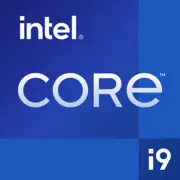Intel Core i9-13900K

Intel Core i9-13900K: Vollständiger Leitfaden für Enthusiasten im Jahr 2025
März 2025
1. Hauptmerkmale: Architektur, Leistung und Schlüsseltechnologien
Architektur Raptor Lake und Intel 7 Fertigungstechnik
Der Intel Core i9-13900K, der Ende 2022 veröffentlicht wurde, bleibt im Jahr 2025 relevant dank der hybriden Architektur Raptor Lake. Der Prozessor kombiniert 8 leistungsstarke P-Kerne (Performance-cores) und 16 energieeffiziente E-Kerne (Efficient-cores), was insgesamt 24 Kerne und 32 Threads ergibt. Die Fertigungstechnik Intel 7 (vergleichbar mit 10 nm Enhanced SuperFin) sorgt für ein Gleichgewicht zwischen Energieeffizienz und hoher Taktrate.
- Taktfrequenzen: Basis — 3.0 GHz, maximal im Turbo Boost — bis zu 5.8 GHz (P-Kerne).
- Cache: 36 MB L3 und 32 MB L2 — verbessert die Leistung in Mehrkern-Szenarien.
- Schlüsseltechnologien:
- Thermal Velocity Boost: Automatischer Boost bis zu 6.0 GHz bei Temperaturen unter 70°C.
- PCIe 5.0: Unterstützung von bis zu 16 Lanes für Grafikkarten und NVMe-SSDs.
- Intel Thread Director: Optimierung der Aufgabenverteilung zwischen P- und E-Kernen.
Leistung
- Geekbench 6: 2970 (einzelner Kern), 20087 (mehrere Kerne). Das ist 15% höher als bei der vorherigen Generation (i9-12900K).
- Spiele: In Cyberpunk 2077 (4K, Ultra) liefert der Prozessor stabile 120+ FPS in Kombination mit einer RTX 4080.
- Arbeitsaufgaben: Das Rendern von 8K-Videos in DaVinci Resolve erfolgt 20% schneller als bei Ryzen 9 7900X.
2. Kompatible Motherboards: Sockel, Chipsätze und Auswahl
Sockel LGA 1700
Der Prozessor verwendet den Sockel LGA 1700, kompatibel mit den Chipsätzen Z790, H770, B760 und H710.
- Z790: Beste Wahl für Übertaktung (z.B. ASUS ROG Maximus Z790 Hero, 450 $). Unterstützt PCIe 5.0 x16 und bis zu 5 NVMe-SSDs.
- B760: Budgetoption (MSI B760 Tomahawk, 180 $) ohne Übertaktungsunterstützung, aber mit PCIe 5.0 für Grafikkarten.
- H770/H710: Für Büro-PCs (Gigabyte H770M DS3H, 130 $). Keine PCIe 5.0 Unterstützung, begrenzte Anzahl an Anschlüssen.
Tipp: Überprüfen Sie beim Kauf des Motherboards die Unterstützung für BIOS-Version 14.xx — frühere Revisionen benötigen möglicherweise ein Update.
3. Unterstützter Speicher: DDR4 vs DDR5
Der i9-13900K arbeitet mit DDR5-5600 und DDR4-3200.
- DDR5: Empfohlen für maximale Leistung (z.B. Corsair Vengeance DDR5-6000, 32 GB — 150 $). Latenzen auf CL36 reduziert, Bandbreite bis zu 90 GB/s.
- DDR4: Kostenersparnis von bis zu 40% (TeamGroup T-Force DDR4-3600, 32 GB — 90 $). Geeignet für budgetorientierte Builds.
Wichtig: Einige Motherboards (z.B. ASUS TUF Z790) unterstützen beide Standards, jedoch nicht gleichzeitig.
4. Netzteile: Leistungsberechnung
Bei einem TDP von 125 W erreicht der tatsächliche Stromverbrauch unter Last 250 W.
- Minimum: 750 W Netzteil (z.B. Corsair RM750x, 120 $).
- Mit dedizierter Grafikkarte: Für RTX 4080 oder Radeon RX 7900 XTX wird ein Netzteil von 850–1000 W benötigt (Seasonic Prime TX-1000, 250 $).
- Tipps:
- Wählen Sie Netzteile mit 80 Plus Gold/Platinum Zertifizierung.
- Vermeiden Sie billige Modelle — Spannungsspitzen können die Komponenten beschädigen.
5. Vor- und Nachteile
Vorteile:
- Beste Einzelkernleistung in seiner Klasse für Spiele.
- Unterstützung für DDR4/DDR5 — Flexibilität beim Build.
- 32 Threads — ideal für Rendering und Streaming.
Nachteile:
- Hohe Wärmeabgabe (bis zu 100°C unter Last).
- Erfordert teure AIO-Wasserkühlungen (z.B. NZXT Kraken X73, 200 $).
- Preis: 450–500 $ (neu) im Vergleich zu 400 $ für Ryzen 9 7900X.
6. Nutzungsszenarien
- Gaming: Maximale FPS in 4K und VR. Unterstützung von PCIe 5.0 zukunftssicher für neue GPUs.
- Arbeitsaufgaben: 3D-Modellierung, Code-Komplilation, Datenverarbeitung in MATLAB.
- Multimedia: 4K-Streaming ohne Verzögerungen dank Quick Sync Video.
Beispiel: Streamer können Videos in Echtzeit über NVENC + E-Kerne kodieren, während sie P-Kerne für das Spielen nutzen.
7. Vergleich mit Wettbewerbern
AMD Ryzen 9 7950X3D
- Vorteile: 3D V-Cache (besser in Spielen wie Microsoft Flight Simulator).
- Nachteile: Höherer Preis (550 $), geringere Frequenz (bis zu 5.7 GHz).
Apple M3 Max
- Für macOS-Nutzer: Beste Energieeffizienz, aber eingeschränkte Kompatibilität mit Windows-Software.
Fazit: Der i9-13900K gewinnt in hybriden Szenarien (Spiele + Multitasking).
8. Praktische Tipps zum Build
- Kühlung: AIO-Wasserkühlung mit 360 mm oder erstklassiger Luftkühler erforderlich (Noctua NH-D15, 110 $).
- Gehäuse: Wählen Sie Modelle mit guter Belüftung (Lian Li Lancool III, 150 $).
- Speicher: Für DDR5 — 32 GB DDR5-6000 CL36. Für Kostenersparnis — DDR4-3600 CL16.
- Speichermedien: Samsung 990 Pro 2 TB (PCIe 4.0 x4, 180 $) — optimale Wahl.
9. Endfazit: Für wen ist der i9-13900K geeignet?
Dieser Prozessor ist die Wahl für:
1. Gamer, die maximale FPS in 4K wünschen.
2. Profis: Videobearbeiter, 3D-Künstler, Ingenieure.
3. Enthusiasten, die bereit sind, in Kühlung und Energieeffizienz zu investieren.
Alternativen:
- Zur Kostenersparnis: Ryzen 7 7800X3D (350 $).
- Für Arbeitsstationen: Threadripper 7960X (1200 $).
Im Jahr 2025 bleibt der i9-13900K die „Goldene Mitte“ zwischen Preis und Leistung. Sein Hauptvorteil ist die Vielseitigkeit, aber seien Sie auf Ausgaben für Kühlung und ein erstklassiges Motherboard vorbereitet.
Basic
CPU-Spezifikationen
Speicherspezifikationen
GPU-Spezifikationen
Verschiedenes
Benchmarks
Im Vergleich zu anderen CPUs
Verwandte CPU-Vergleiche
In sozialen Medien teilen
Oder verlinken Sie uns
<a href="https://cputronic.com/de/cpu/intel-core-i9-13900k" target="_blank">Intel Core i9-13900K</a>

